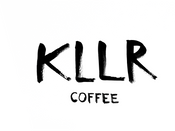In this blog post, we will be discussing what is considered a dark roast, how it is that dark roasted coffee fell out of favor with so many baristas and coffee enthusiasts, and the current renaissance of dark roasted coffees. Over the course of 12 months, KLLR has released two dark roasted coffees, “El Alacrán” and “1907”. “El Alacrán” is a blend of Brazilian, Guatemalan, and African coffees, giving it its unique smokey, sweet, fruity flavor; “1907” is a blend of Indonesian and Colombian coffees, boasting delicious notes of mulled apple cider, baker’s chocolate, and cooked citrus. Both of these coffees are unlike any other offering KLLR has had in the past, not only because they’re blended coffees, but also because they are roasted dark.
Before we talk about what dark roasted coffee actually is, we are going to explain a little bit of the roasting process. During roasting, maybe about 9 minutes into the roast, the coffee beans will make a crackling sound, similar to popcorn but higher in pitch; we call this phase of the roast 1st crack and the beginning of the development phase. Most light roasted coffees are finished roasting about 2 minutes - 2.5 minutes after 1st crack has begun, and medium roasts until about 2.5 - 3.5 minutes after 1st crack or until the end of 1st crack. About 4 minutes into the development phase, a 2nd crack will begin, this one sounding more like the crackling sound of a campfire, and it is at this point that coffees are considered dark roasts.
Dark roasts are generally characterized by smokey, bitter chocolate, and roasty flavors. Unfortunately for most of us, dark roasted coffees have largely been presented by large companies who use lower quality coffees and fast roasting; such dark roasts usually taste exceptionally bitter and burnt. In the 1990s we saw a huge movement into what we now call “specialty coffee”, also known as "Third Wave Coffee", and roasters began sourcing more directly from farmers and purchasing higher quality coffees at a higher price; also, roasters adopted light roasting as an industry standard for specialty coffee. At the same time, most people who roasted, prepared, and enjoyed the “new” style of roasting coffee began associating any dark roasted coffee as a poor quality coffee, which is highly unfortunate because there are some roasters out there who roast exceptionally delicious dark roasted coffees.
In demonizing dark roasts and blends, "Third Wave Coffee" also caused many people to be rather put off by specialty coffee, as they felt that specialty coffee was very exclusive and not at all inclusive. This is a big detriment to the coffee industry as a whole, especially small batch and micro roasters and cafes. Fortunately, it seems like there is a bit of a movement by many small batch and micro roasters to bring back dark roasts and blends, and we are hoping this trend continues because KLLR believes everyone deserves good coffee. In April 2023, KLLR decided it was time to introduce our 1st dark roast offering called “El Alacrán”, and it was a delicious success. In March 2024, we released “1907”, and it is perhaps our favorite of our two dark roasts. But why don’t our dark roasts taste bitter or burnt? How are well crafted dark roasts highly complex in flavor? Let's dig into that next.
It starts with the green coffee we use; we always try our coffees before we purchase them, they are never bought at random, so the quality is always high and consistent. Also, we roast our dark roasts slowly and carefully, never rushed; also, we always roast in small batches, as it is easier to keep quality consistent with small batches over large batches. Lastly, the level of dark that we roast to is actually the lightest of any dark roast level; this level of dark roast is called “Vienna roast”. Compared to “French” and “Italian” roasts, “Vienna” roasts are dropped from the roaster no later than 30 seconds into 2nd crack; this gives the coffee enough time to begin developing smokey flavors without any unpleasant burn bitterness, and the coffees still retain a lot of their inherent flavor notes. Also, “Vienna” roasts are some of the sweetest coffees when roasted properly; in fact, when roasted well and served well, “Vienna” roasts might make you salivate the moment you sip it because of how sweet they are. Don’t believe us? Why don’t you take one of our two dark offerings for a spin!
Most commercial dark roasted coffee:


KLLR's dark roasted coffee:


